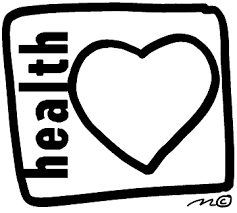Does Being Thin Mean You’re Healthy? Not Necessarily!
 About a third of all Americans are overweight, and another third are obese, according to the Centers for Disease Control. Being overweight is a major risk factor for diabetes, stroke, high blood pressure, heart disease, and some cancers. It’s also a factor for sleep apnea, which occurs when you stop breathing for a period of time during sleep, leading to troubles with concentration and contributing to heart failure.
About a third of all Americans are overweight, and another third are obese, according to the Centers for Disease Control. Being overweight is a major risk factor for diabetes, stroke, high blood pressure, heart disease, and some cancers. It’s also a factor for sleep apnea, which occurs when you stop breathing for a period of time during sleep, leading to troubles with concentration and contributing to heart failure.
But does being thin, by contrast, mean you’re healthy and at a lower risk of developing certain diseases? Not necessarily, according to experts.
Does BMI Indicate Good Health?
Body mass index, or BMI, is used to calculate the ideal weight for your height. A BMI of 18.5 to 24.9 is considered normal weight, while a BMI of 25 to 29.9 indicates overweight. Obesity is diagnosed when your BMI is 30 or higher. However, many experts say that BMI isn’t a good indication of hidden fat, which increases the risk of serious health problems even if you look great in your size 6 skinny jeans.
Hidden Fat: Normal-Weight Obesity
The European Heart Journal conducted a study in 2010 that found that up to 30 million Americans may have normal-weight obesity, which occurs when those with a low BMI have a buildup of fat around their organs. If you have normal-weight obesity, you’re at the same high risk of a variety of health problems as those who are overweight-obese. Obesity is an indication of too much body fat rather than the result of weighing too much.
Diagnosing Normal-Weight Obesity
While your body mass index is a good indication of whether your weight is normal for your height, it can’t identify body fat around your organs. Two reliable methods of measuring body fat percentage are bioelectric impedance and BOD POD.
Bioelectric impedance uses an electrical current to measure the composition of your body. It’s easy to measure body fat this way, and it’s widely available at health clinics and fitness centers.
BOD POD is a machine that uses air to displace body volume to determine how much body fat you have. It’s also widely used in health clinics and fitness centers.
Depending on your fitness level, your body fat percentage should be in the 14 to 31 percent range if you’re a woman and the six to 25 percent range if you’re a man. If you are thin but have a high body fat percentage, your goal will be to change the composition of your body rather than lose weight.
Changing Body Composition
Changing your body composition means reducing the amount of fat in your body while increasing lean body mass, which is largely a matter of building muscle. The more muscle you have, the stronger you are and the better your immune system works. Increased muscle mass also burns more fat, leading to healthier organs and a lower risk of developing a variety of diseases.
Eating a healthy diet that includes lean proteins, fruits and vegetables, and whole grains and working to build more muscle mass is the best way for someone with normal-weight obesity to change their body composition and lose the fat that surrounds the organs.
Check Your Body Fat Percentage
Next time you’re at the doctor or the gym, inquire about having your body fat percentage calculated. If you’re in the danger zone, talk to your doctor or fitness expert about a personalized plan for changing your body composition for better health and a longer life.



